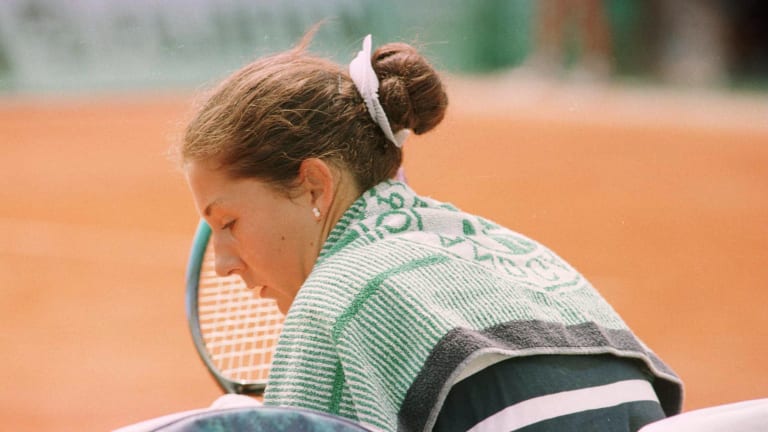TBT, 1993 Hamburg: Monica Seles' stabbing changes tennis history
By Apr 30, 2020Social
Jaden Agassi, son of tennis legends Andre Agassi and Steffi Graf, works to make mark in baseball
By Mar 02, 2025pickleball
Steffi Graf and Andre Agassi win $1 million at Pickleball Slam 3 over Eugenie Bouchard and Andy Roddick
By Feb 17, 2025Social
Iga Swiatek has 'kinda amazing' meet-up with Andre Agassi and Steffi Graf
By Aug 16, 2024Indian Wells, USA
Top 5 Indian Wells Finals, No. 1: Serena Williams d. Steffi Graf, 1999
By Mar 17, 2024pickleball
PHOTOS: Stefanie Graf, Andre Agassi top Maria Sharapova, John McEnroe at Pickleball Slam 2
By Feb 06, 2024Pop Culture
Who is ... Steffi Graf? Tennis legend features in Jeopardy! clue
By Jan 31, 2024US Open
What are the chances Novak Djokovic and Carlos Alcaraz duel at the US Open?
By Aug 26, 2023Facts & Stats
The Sunshine Double: All the players who’ve won Indian Wells and Miami in the same year
By Mar 26, 2023Facts & Stats
Ranking Reaction: Novak Djokovic surpasses Steffi Graf with 378th career week at No. 1
By Feb 27, 2023TBT, 1993 Hamburg: Monica Seles' stabbing changes tennis history
Upset by the teenager's ascent, Gunter Parche—an unemployed German lathe operator—wanted nothing more than to see Steffi Graf return to the top.
Published Apr 30, 2020
Advertising

TBT, 1993 Hamburg: Monica Seles' stabbing changes tennis history
© Getty Images
Advertising

TBT, 1993 Hamburg: Monica Seles' stabbing changes tennis history